Kalachakra meaning
The Sacred Symbolism Of The Kalachakra Mandala
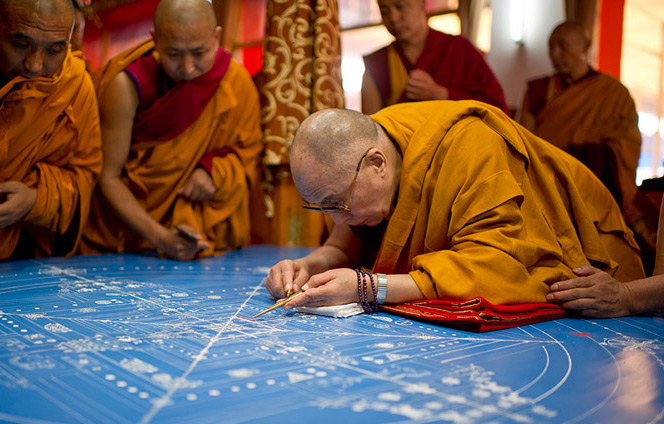
His Holiness the Dalai Lama composing a Kalachakra Mandala during a ritual.
The Kalachakra mandala is definitely one of the most eye-catching thangka painting and appreciated for the symbolic elements that compose it and the visual representation of important teachings of traditional Tibetan Buddhism.
However, as explained by His Holiness the Dalai Lama, many mistaken interpretations have circulated among people who viewed the Kalachakra mandala simply as a work of art.
The Kalacakra tantra is considered the most advanced practice of Vajrayana tradition. This complex system of teachings was originated in India and incorporated into Tibetan Buddhist tradition.
The Dalai Lama himself attends to a series of rituals called “Kalachakra empowerment initiation” and the creation of the Kalachakra mandala is used as a visual textbook for Buddhist practitioners.
The Kalacakra initiation is based on the concepts of time (kala) and cycles (chakra) and, before approaching these rituals, the disciple should have acquired knowledge of the three principal aspects of the Mahayana doctrine: Samsara, Bodhichitta and emptiness.
In this article we will not examine in depth the philosophical aspects of the Tantric initiation but we will focus on explaining the significance of the symbols depicted in the mandala.
First of all it is important to know how to display the Kalachakra mandala correctly. Notice the four different colors of the main inner elements (red, yellow/orange, white and black). The mandala must be oriented with the black side facing down.
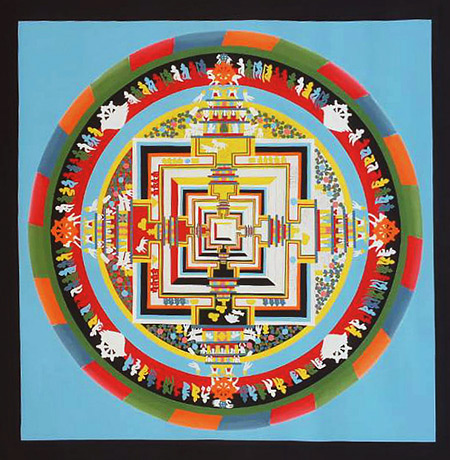
The outer ring is called wisdom circle or protective ring. It is decorated with golden flames and the combination of these colors create a rainbow that symbolize the five aspects of the primordial wisdom and the five Dhyani Buddhas.
After the space ring there are four inner rings representing the four main elements: air, fire, water, and earth.
The central part of the mandala had 3 distinct inner layers called body, speech and mind mandalas.
The geometric structure is the projection of a majestic palace with four gates and five floors.
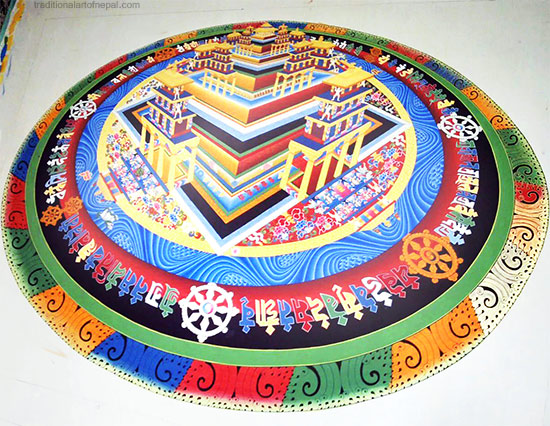
Inside the Body Mandala are represented with syllables and symbols a total of 536 deities. Twelve animals are depicted inside the main gates and protecting the outer walls, representing the months of the year.
The Body Mandala surrounds the Speech Mandala that has the same geometry and inside of which are represented 36 offering goddesses and 80 Yoginis.
The most inner part is called the mind Mandala that occupy the last three floors of the palace and homes 80 deities.
The lotus flower at the center is the symbol of the Buddha mind.
There are several design of thangka paintings of the Kalachakra mandala. In the most complex artworks two deities are depicted in the center of the mandala instead of the lotus flower.
These important deities are Kalachakra and Vishvamata depicted in Yab-Yum: the divine Tantric union that symbolize the cyclic nature of time. This is why the Kalachakra Mandala is also called the “time wheel”.
The Kalachakra Mandala is also represented with one of the most important and well known symbol of the Tibetan Tantric tradition: the Sanskrit seed syllables of the Kalachakra system known as “the mighty ten stacked syllables”.
Each syllable that compose the mantra has a different color and they are represented all interconnected on top of a lotus flower and surrounded by a ring of fire.
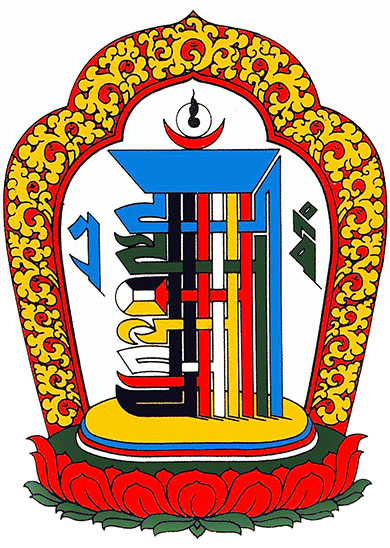
To meditate on the mandala and recite the Kalachakra mantra bring peace of mind and benefits for all sentient beings.
The powerful Kalachakra mantra is spelled: Om Ham Ksha Ma La Va Ra Ya Sva Ha.
Namaste.
Mandala: Sacred Geometry and Healing Art
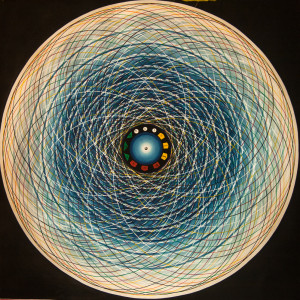 The word mandala is of Hindu origin and is derived from the root ‘manda’, which means essence, and the suffix ‘la’, meaning container.
The word mandala is of Hindu origin and is derived from the root ‘manda’, which means essence, and the suffix ‘la’, meaning container.
Mandala is a term that appears on a chapter of the Rig Veda, a collection of mantras or hymns chanted in Vedic ceremonies. The universe was believed to originate from these mantras, whose sacred sounds contained the genetic patterns of beings and things. This is the reason why it is possible to define “mandala” as a world-model.
In fact mandalas usually represent sacred places which, by their very presence in the world, remind a viewer of the immanence of sanctity in the universe and its potential in his or her self.
Generally speaking mandala is a term for any geometric symbol that represents the cosmic energy in a metaphysical or symbolic matter.
Mandala Buddhist Art
Among the many traditions of Buddhist art the three areas where the Tibetans have made the most significant contributions are mandalas, images of deities and portraiture. In the context of the Buddhist path the purpose of a mandala is to put an end to human suffering, to attain enlightenment and a correct view of reality. It is a mean to discover divinity by the realization that it resides within our own self.
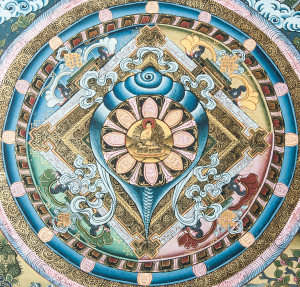 In Tibetan Buddhism mandalas are used for meditation and their specific designs reminding the practitioner of important guiding principle.
In Tibetan Buddhism mandalas are used for meditation and their specific designs reminding the practitioner of important guiding principle.
In fact it is used as visual aid for concentration and meditation leading to the attainment of insights and to activation of forces culminating in “Siddhi”, term used by tantric buddhism doctrine to define special psychic powers.
In its most common form, the mandala appears as a series of concentric circles. Each mandala has its own resident deity housed in the square structure situated concentrically within these circles. Its perfect square shape indicates that the absolute space of wisdom is without aberration. This square structure has four elaborate gates. These four doors symbolize the bringing together of the four boundless thoughts namely – loving kindness, compassion, sympathy, and equanimity. Each of these gateways is adorned with bells, garlands and other decorative items.
This square form defines the architecture of the mandala described as a four-sided palace or temple.
A palace because it is the residence of the presiding deity of the mandala, a temple because it contains the essence of the Buddha.
Mandala Healing Art
Painting mandalas isn’t an activity done merely in religious contexts.
It’s an art for everybody. And it’s a very effective Therapeutic Art !
Carl Gustav Jung introduced the Eastern concept of the mandala to Western thought and believed this symbol is a representation of the individuality and a reflection of the Self.
According to Jung, mandalas symbolize “a safe refuge of inner reconciliation and wholeness.”
The creative process of making mandalas helps to revisit the universal experience embodied in the circle and, as Jung found, helps us to experience and reflect on the essence of who we are in the here and now.
Not only are Mandalas very healing to paint but they radiate healing energy.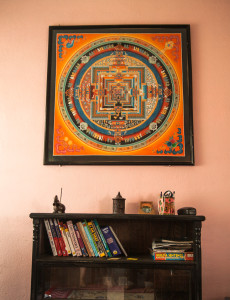
In fact when you have such a mandala in your house, its presence creates a powerful field of energy.
That is why we suggest our customers to place their mandala in a room where they spend five or more hours each day.
This could be your bedroom, your office or your living room.
If you are travelling in Nepal and you are willing to learn how to paint beautiful thangka and mandala paintings feel free to send us a message or contact us using your favorite social media:
Facebook
Twitter
Instagram
Sunapati Thanka Painting School
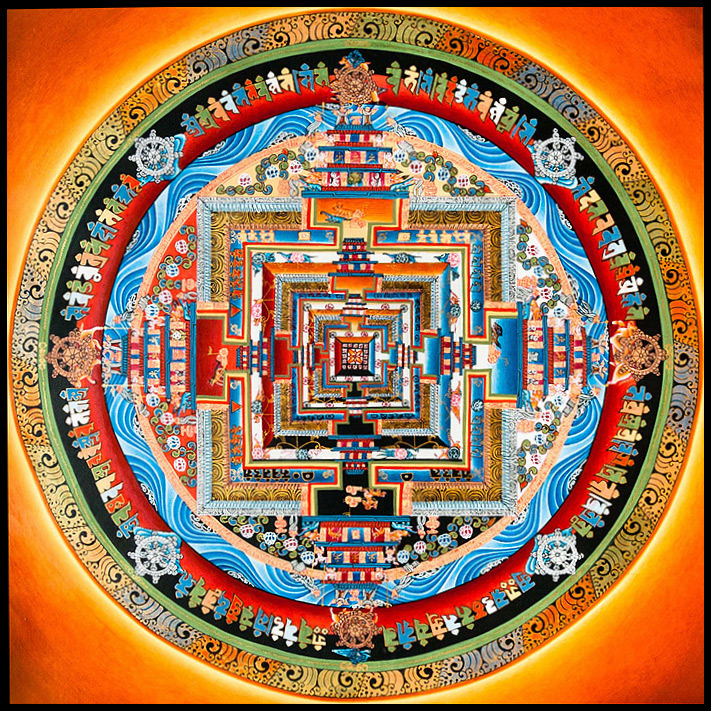
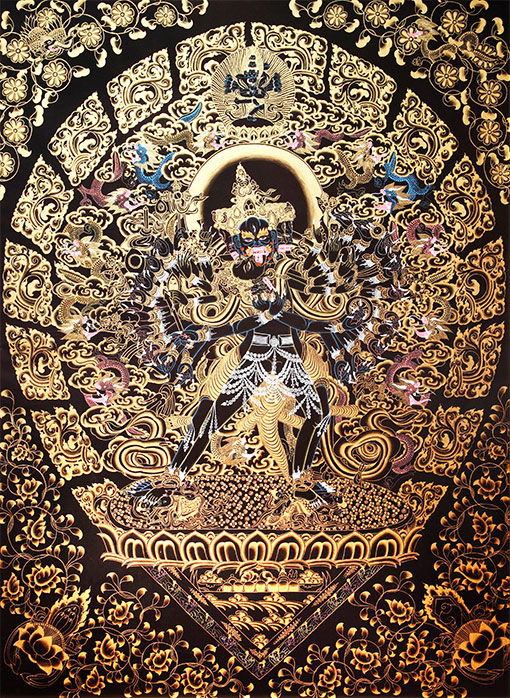
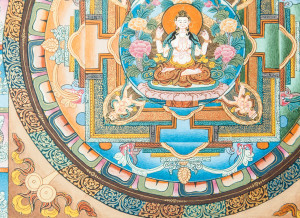
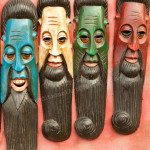 Sadhu Baba Masks
Sadhu Baba Masks 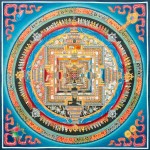 Kalachakra Mandala Auspicious Symbols
Kalachakra Mandala Auspicious Symbols 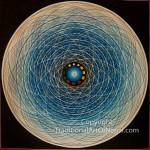 Universe Om Mandala
Universe Om Mandala 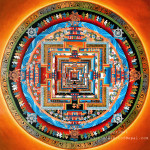 Kalachakra Mandala
Kalachakra Mandala 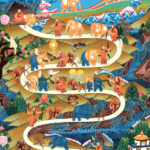 Samatha Meditation Thangka
Samatha Meditation Thangka 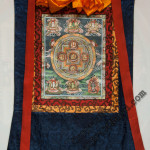 Silk Frame #02
Silk Frame #02 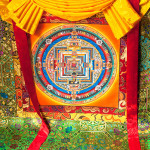 Modern Design Brocades
Modern Design Brocades 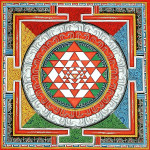 Sri Yantra Mandala
Sri Yantra Mandala 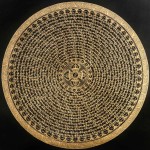 Yin Yang Mantra Mandala
Yin Yang Mantra Mandala 





